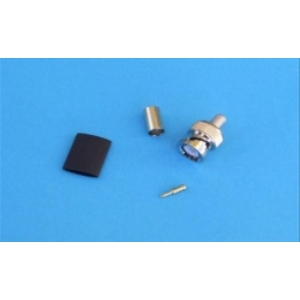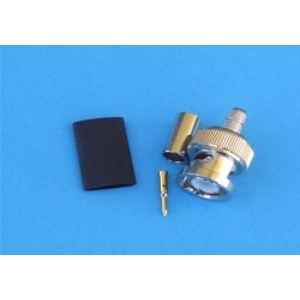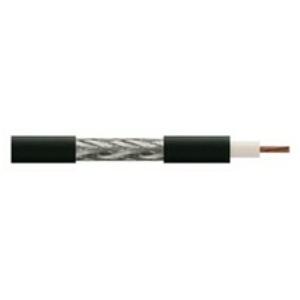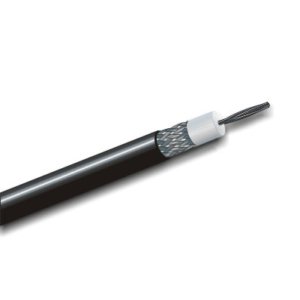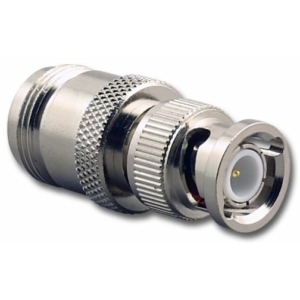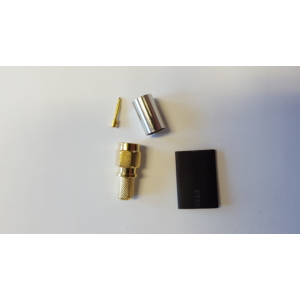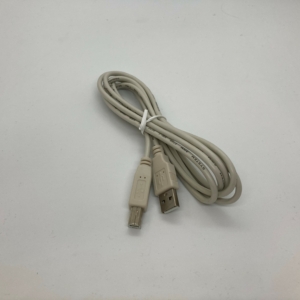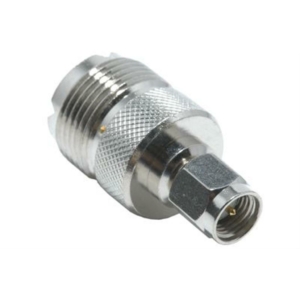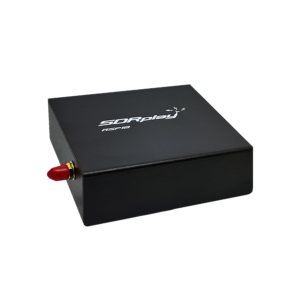Description
The SDRplay RSPdx-R2 is a single-tuner wideband full featured 14-bit SDR which covers the entire RF spectrum from 1kHz to 2GHz giving up to 10MHz of spectrum visibility.
It contains three antenna ports, two of which use SMA connectors and operate across the full 1 kHz to 2 GHz range and the third uses a BNC connector which operates up to 200MHz.
The SDRplay RSPdx-R2 is an enhanced version of the RSPdx with further design improvements for use at frequencies below 2MHz. Housed in a strong steel case, in addition to the functionality of the RSP1B, the SDRplay RSPdx-R2 provides three software selectable antenna inputs and an external clock input. It offers excellent performance through HF and VHF frequencies all the way up to 2GHz. The SDRplay RSPdx-R2 also supports an “HDR mode” optimised for the demanding radio reception conditions below 2MHz.
The SDRplay RSPdx-R2, when used in conjunction with SDRplay’s own software, introduces a special HDR (High Dynamic Range) mode for reception within selected bands below 2MHz. HDR mode delivers improved intermodulation performance and fewer spurious responses for those challenging bands.
To check compatibility with your choice of computer hardware, operating system and SDR application software, go to https://www.sdrplay.com/downloads/
SDRplay RSPdx-R2 main advantages and features:
- Covers all frequencies from 1kHz through VLF, LF, MW, HF, VHF, UHF and L-band to 2GHz, with no gaps
- Receive, monitor and record up to 10MHz of spectrum at a time
- Significantly improved noise performance below 1MHz (i.e. for some MF, LF and below)
- Improved dynamic range below 2MHz both in tuner mode and HDR mode
- HDR mode below 2MHz giving overall dynamic range and selectivity advantages
- Software selectable choice of 3 antenna ports
- External clock input for synchronisation purposes, or connection to GPS reference clock for extra frequency accuracy
- Excellent dynamic range for challenging reception conditions
- Free use of Windows-based SDRuno software (check website for versions supported)
- Free use of SDRconnect SDR and server software for Windows, MacOS and Linux (Check website for versions supported)
- Multiplatform driver and API support including Windows, Linux, Mac and Raspberry Pi 4/5
- Strong and growing software support network
- Calibrated S meter/ RF power and SNR measurement with SDRuno (including datalogging to .CSV file capability)
- Documented API provided to allow demodulator or application development on multiple platforms
SDRplay RSPdx-R2 application areas:
- Amateur Shortwave radio listening
- Broadcast DXing (AM/FM/TV)
- Panadaptor
- Aircraft (ADS-B and ATC)
- Slow Scan TV
- Multi-amateur band monitoring
- WSPR & digital modes
- Weather fax (HF and satellite)
- Satellite monitoring
- Geostationary environmental satellites
- Trunked radio
- Utility and emergency service monitoring
- Fast and effective antenna comparison
- Industrial Spectrum Analyser
- Surveillance
- Wireless microphone monitoring
- RF surveying
- IoT receiver chain
- Signal logging
- RFI/EMC detection
- Broadcast integrity monitoring
- Spectrum monitoring
- Power measurement
- Educational/Scientific
- Teaching
- Receiver design
- Radio astronomy
- Passive radar
- Ionosonde
- Spectrum analyser
- Receiver for IoT sensor projects
- Antenna research
Please note: This product launched in May 2024 and initially only SDRplay software and APIs were released by SDRplay. Other 3rd Party software may not yet be compatible with the RSPdx-R2. Please check specific 3rd Party application for compatibility via www.sdrplay.com/third-party
NEW SDRconnectTM SDR software for Windows, MacOS and Linux/Raspberry Pi:
- All new intuitive graphical interface launched in 2023
- Highly integrated native support for the SDRplay family on Windows, MacOS, and Linux/Rasberry Pi 4/5
- Multiple ‘virtual receivers’ for simultaneous reception and demodulation of different types of signals within the same receiver bandwidth
- Multiple notch filters with BW adjustable to 1Hz
- Synchronous AM mode with selectable/adjustable sidebands
- Calibrated RF Power Meter with > 100dB of usable range
- Calibrated S-Meter supporting IARU S-Meter Standard
- Integrated server allows remote cross-platform access via high speed LAN and regular internet WAN connectivity
- “Audio” (Compact) mode allows limited bandwidth WAN connections with spectrum visibility up to 10MHz plus multimode audio access (AM/Wideband FM/SSB/CW etc)
- Rolling release model allows for future feature enhancements
- Modular approach for future 3rd party development
SDRunoTM for Windows features:
- Highly integrated native Windows support for the SDRplay family
- Up to 16 ‘virtual receivers’ for simultaneous reception and demodulation of different types of signals within the same receiver bandwidth
- An integrated frequency scanner (for frequency ranges and stored memory panel lists)
- A selectivity filter with an ultimate rejection greater than 140dB.
- A unique distortion-free double stage AGC with fully adjustable parameters
- AFC for FM signals
- Multiple notch filters with BW adjustable to 1Hz + Notch Lock feature
- A unique synchronous AM mode with selectable/adjustable sidebands, dedicated PLL input filter, & selectable PLL time constants
- SNR (stereo noise reduction), featuring a proprietary noise reduction algorithm for stereo broadcast
- Powerful wideband noise filter for addressing common sources of RFI (e.g. power supplies, internet over DSL etc.)
- Calibration for receiver frequency errors
- RDS support optimised for low signal environment
- Active Noise cancelling
- CAT and Omnirig control
- Calibrated RF Power Meter with > 100dB of usable range
- Calibrated S-Meter supporting IARU S-Meter Standard
- The ability to save power (dBm) and SNR (dB) measurements over time, to a CSV file for future analysis
- IQ output accessible for 3rd party applications
You can find more information on the following sites:
- SDRPlay website: www.sdrplay.com/
- Softwares, manuals: www.sdrplay.com/downloads/
- SDRPlay forum: www.sdrplay.com/community/
- SDRPlay blog: www.sdrplay.com/blog/
- Introducing the SDRplay Raspberry Pi downloadable SD Card Image: www.youtube.com/watch?v=qXThS1XszhQ&feature=youtu.be
- Video and pdf collection: www.sdrplay.com/apps-catalogue/
- SDRPlay facebook: www.facebook.com/SDRPlay/
- SDRPlay twitter: https://twitter.com/SDRplay
IMPORTANT NOTICE!
SDR radios have no control panel, therefore manufacturers do not supply a user manual. Our company only sells SDR hardware; operation of these devices requires various software that you can download from the internet. Most of these software products are only available for download in the English language from the websites of manufacturers and third-party developers (many of them radio amateurs) either for free or for a fee. Installation, setup and usage of the software require an intermediate level of proficiency in computing and the English language. We do not advise buying this equipment unless you have these required skills, and we recommend seeking assistance and prior information from other radio hams on internet-based forums and user groups.
For SDRplay products, we recommend you to purchase the USB printer cable that we sell. Other USB cables may generate a lot of electromagnetic noise which may interfere with reception.
| SPECIFICATIONS | |
| General | |
| Weight | 315g |
| Size | 113mm x 94mm x 35mm |
| Low current consumption | 190mA @ >60MHz (excl Bias T), 120mA @ <60MHz (excl Bias T) |
| Connectivity | USB 2.0 (high speed) type B socket, frequency Range, Continuous coverage 1kHz – 2GHz |
| Antenna A Port Characteristics | 1kHz – 2GHz operation, 50Ω input impedance, SMA female connector |
| Antenna B Port Characteristics | 1kHz – 2GHz operation, 50Ω input impedance, SMA female connector, Selectable 4.7V DC out (see Bias T) |
| Antenna C Port Characteristics | 1kHz – 200MHz operation, 50Ω input impedance, BNC female connector |
| Antenna port isolation | Unselected port isolation 40dB min |
| Reference Clock Input | MCX female connector |
| Bias T (Antenna B Port only) | Software selectable 4.7V @ 100mA |
| IF Modes | Zero IF, All IF bandwidths, Low IF, IF bandwidths ≤ 1.536MHz |
| IF Bandwidths (3dB) | 200kHz, 300kHz, 600kHz, 1.536MHz, 5.0MHz, 6.0MHz, 7.0MHz, 8.0MHz |
| ADC Characteristics | Sample frequency 2 – 10.66MSPS, 14-bit native ADC (2 – 6.048MSPS), 12-bit (6.048- 8.064 MSPS), 10-bit (8.064- 9.216MSPS), 8-bit (> 9.216 MSPS ) |
| Maximum recommended input power | 0dBm continuous, 10dBm for short periods |
| Reference | High temp stability 0.5PPM TCXO, In-field trimmable to 0.01ppm. |
| External Reference Clock | Plug in the external clock before power-up. Auto-detect will switch to the external reference., Frequency 24MHz sine/square wave, 1V Pk-Pk Min, 3.3V Pk-Pk Max |
| Typical Noise Figures | 19dB @ 300kHz, 18dB @ 2MHz, 17dB @ 12MHz, 15dB @ 25MHz, 15dB @ 40MHz, 2.6dB @ 100MHz, 2.1dB @ 200MHz, 6.0dB @ 340MHz, 3.1dB @ 660MHz, 4.4dB @ 1500MHz, 5.0dB @ 1800MHz |
| Notch Filters | |
| FM Notch Filter | >30dB 77 – 115MHz, >50dB 85 – 107MHz, >4dB 144 – 148MHz, MW |
| Notch Filter | >15dB 400 – 1650kHz, >30dB 500 – 1530kHz, >40dB 540 – 1490kHz |
| DAB Notch Filter | >20dB 155 – 235MHz, >30dB 160 – 230MHz |
| Front End Filtering | |
| Low Pass | 500kHz, 2MHz |
| Band Pass | 2-12MHz, 12-30MHz, 30-60MHz, 60-120MHz, 120-250MHz, 250-300MHz, 300-380MHz, 380-420MHz, 420-1000MHz, |
| High Pass | 1000MHz |
| Note | The notch filters above are software selectable and remove specific broadcast bands. |


